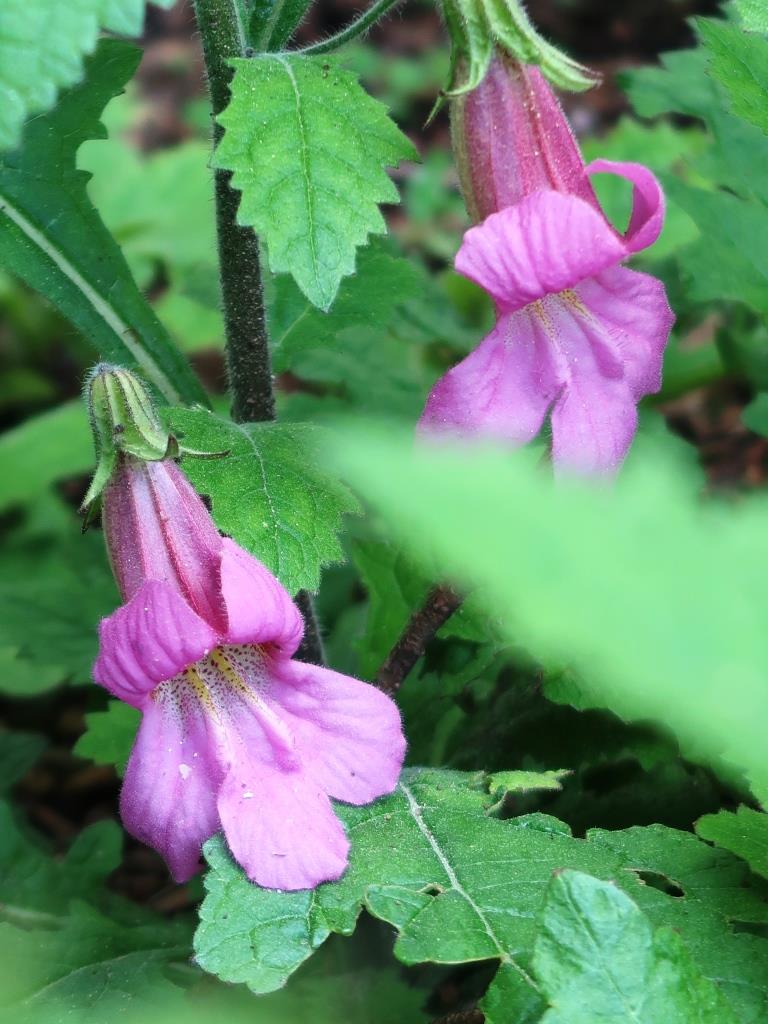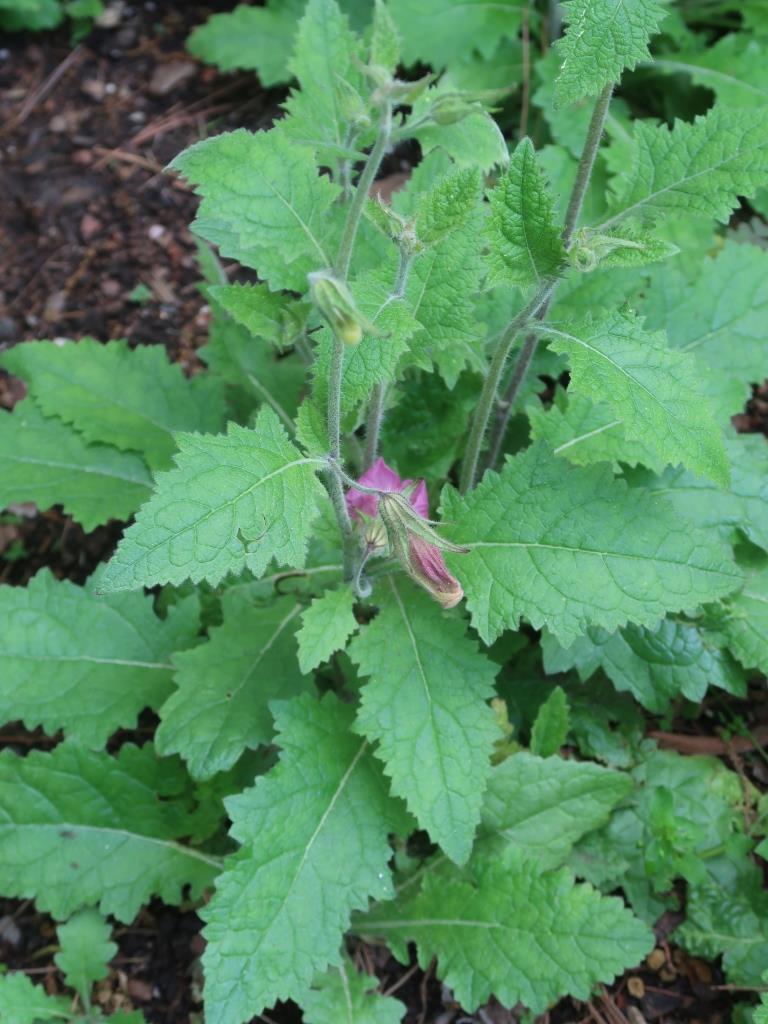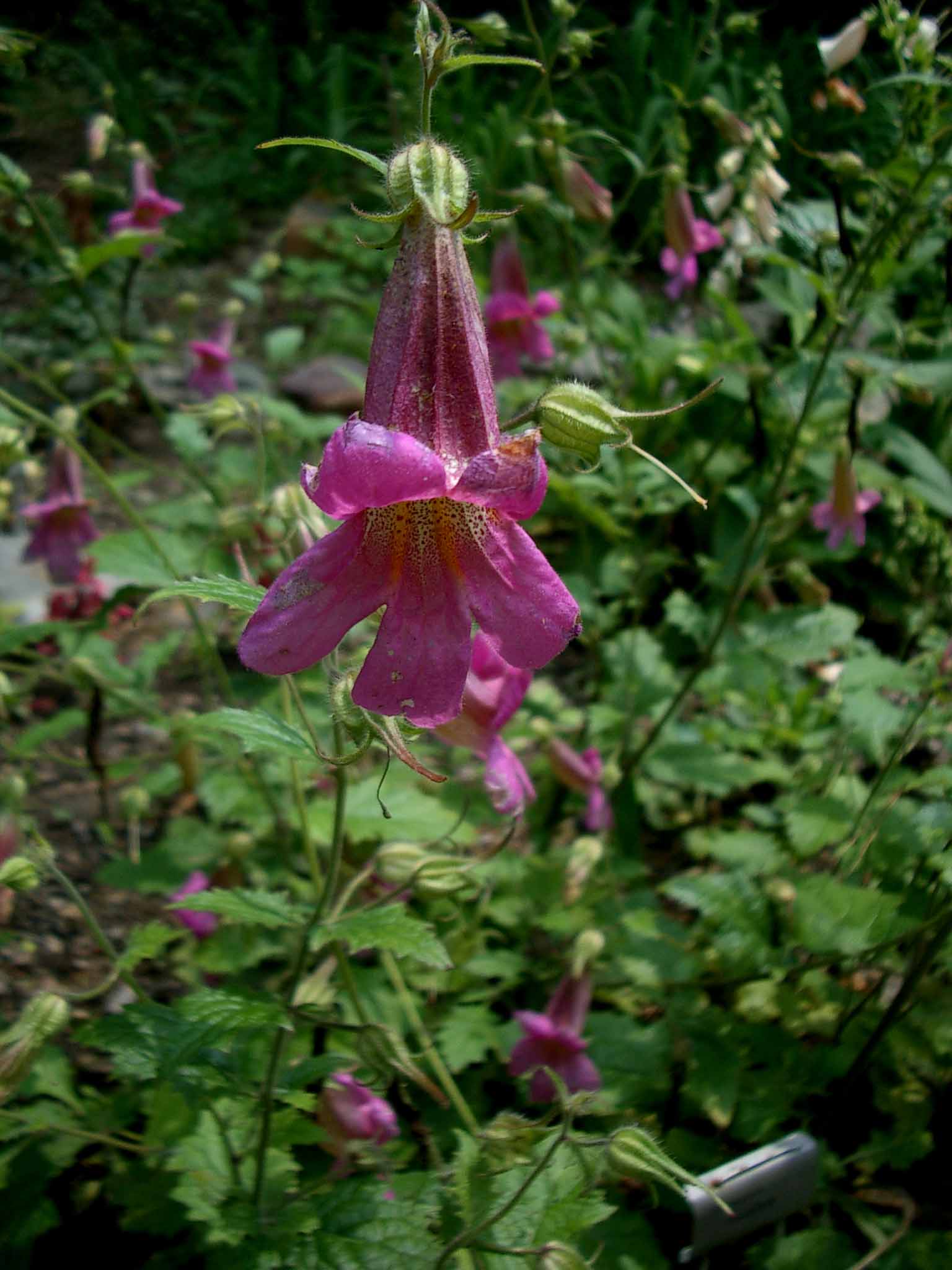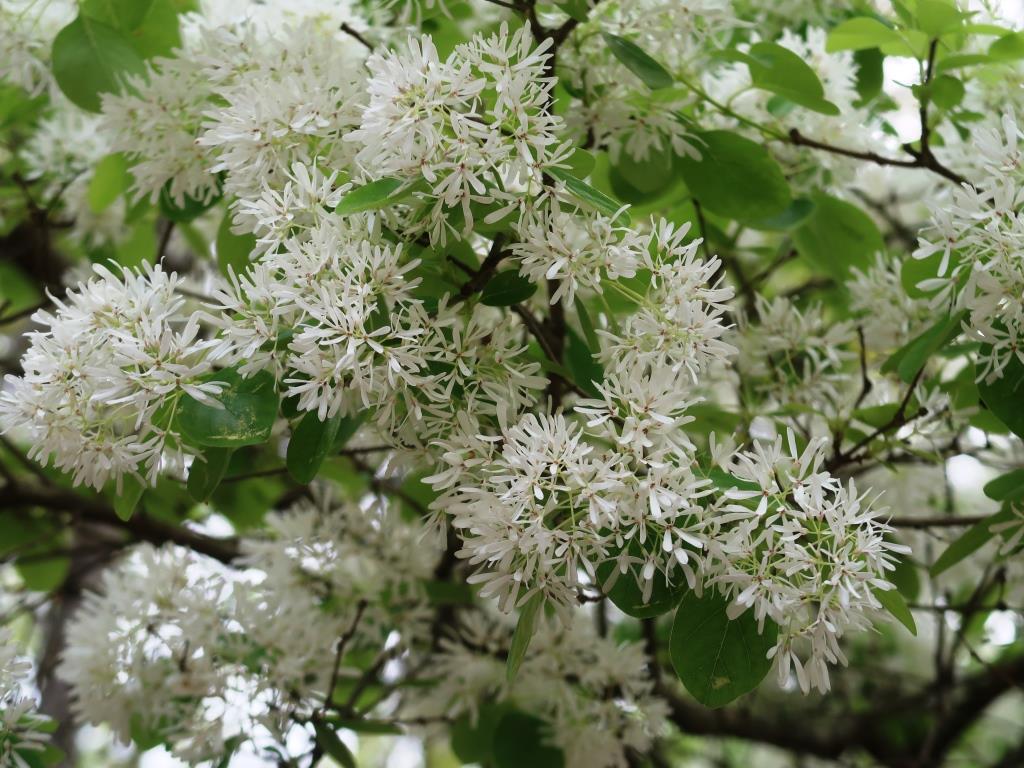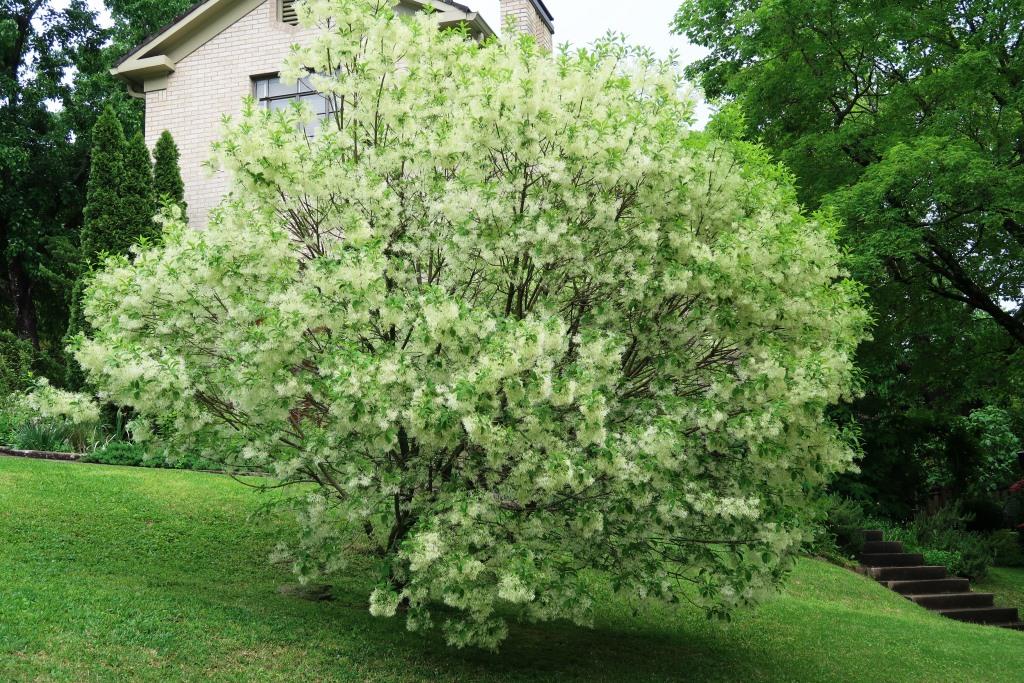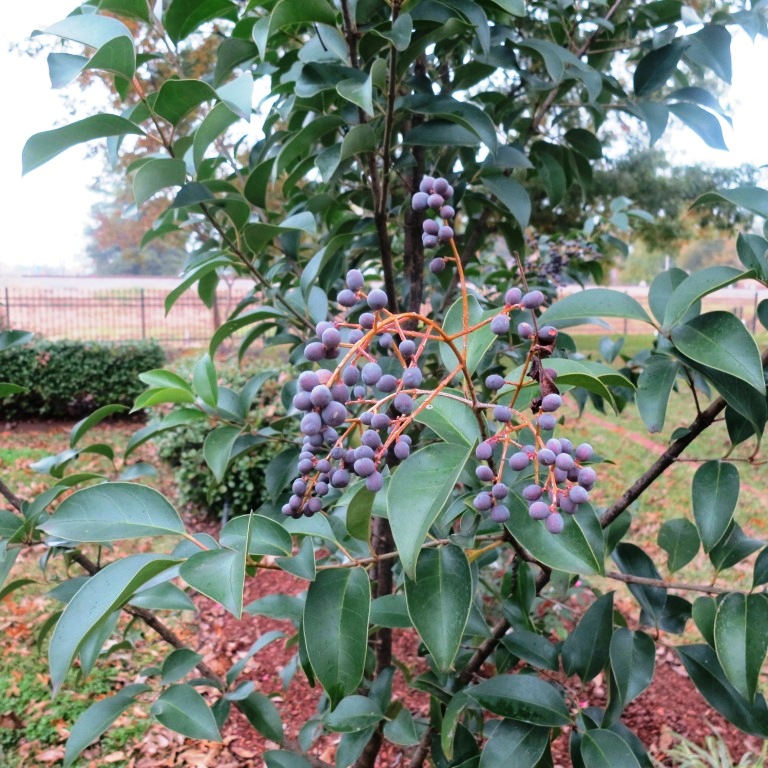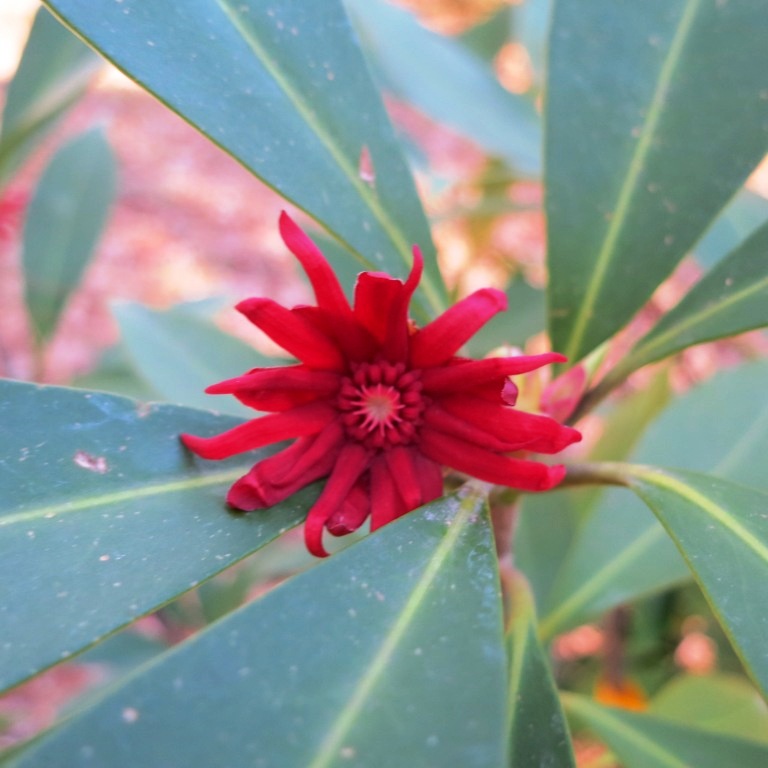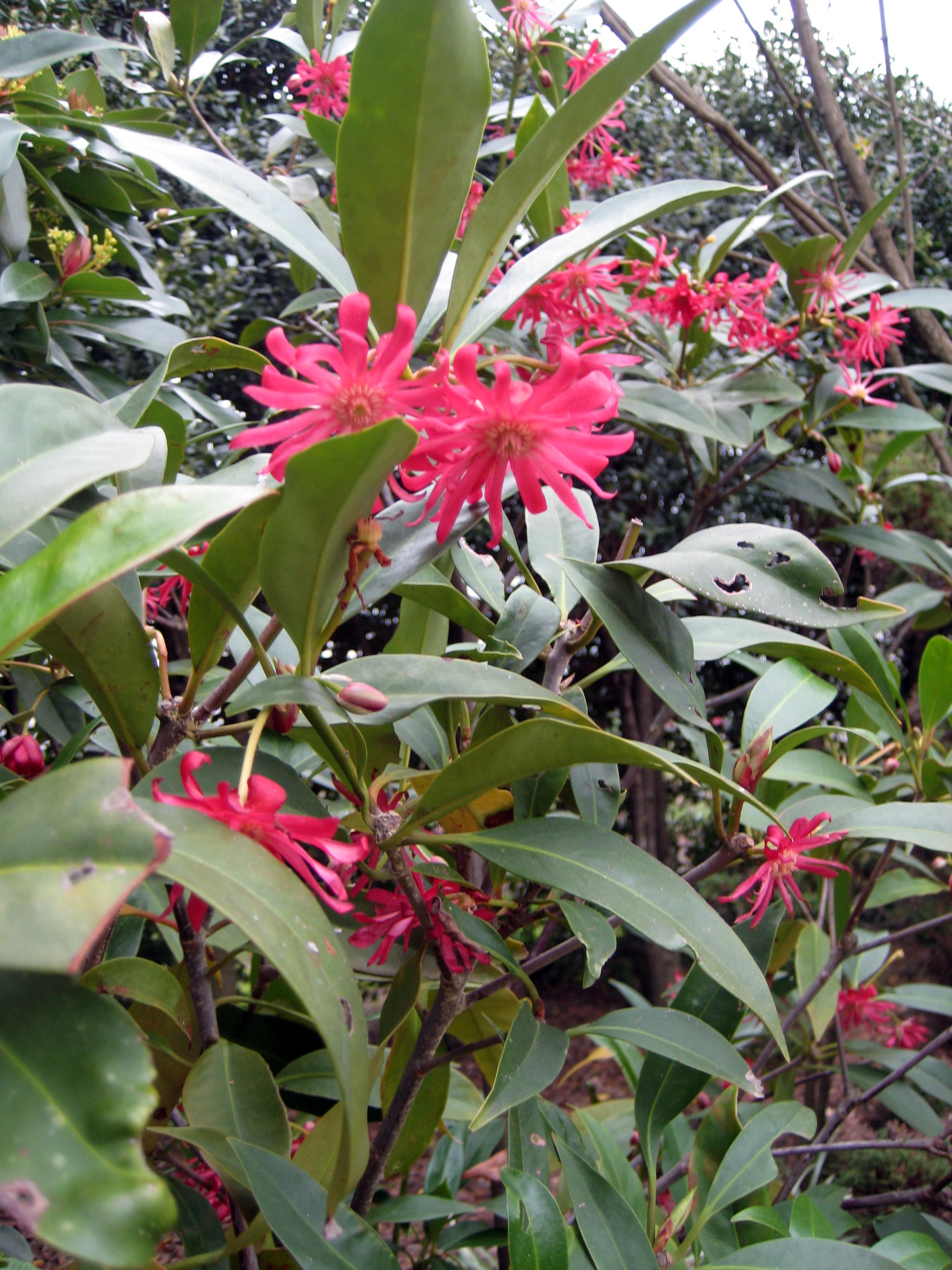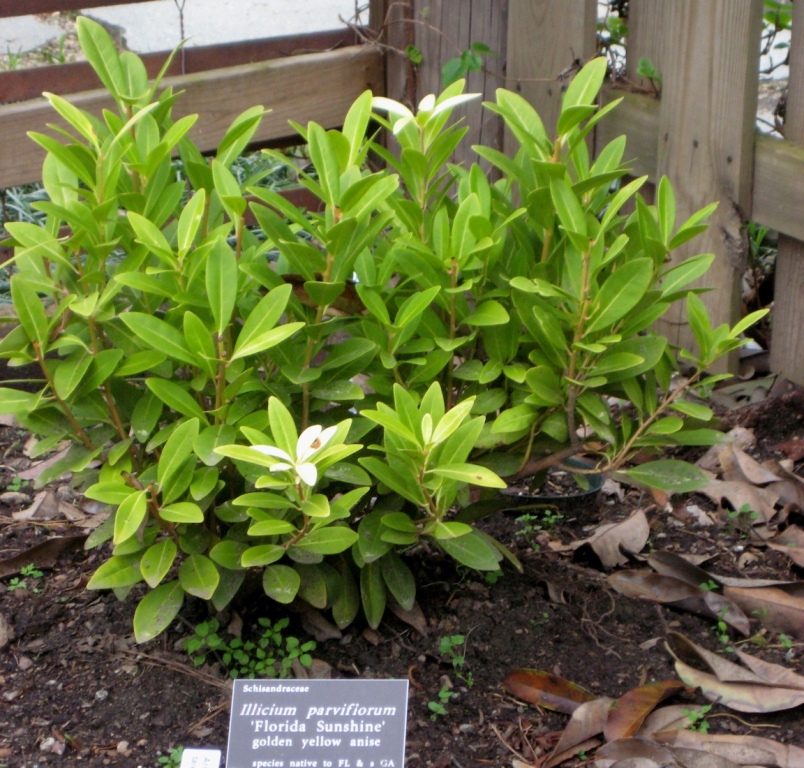Chinese foxglove - Rehmannia elata is a perennial from China that should do well in most of our state, but perhaps a little iffy in the northern tier. This clump forming shade perennial will bloom best in filtered sunlight.
The spikes of large rosy, purple blooms can bloom from late spring through summer.
It prefers a moist, rich soil. I saw this one blooming at Garvan Gardens last week, and then wonder of wonders, got one for my own garden from a friend this week!
Chionanthus virginicus -
Fringe Tree or Grancy Gray Beard or Old Man's Beard is a native, small tree in the olive family. The white fringed flowers
grace the tree from mid-April through mid-May. It does best in full sun to partial shade and can eventually grow 20 feet tall and wide.
It is a tough tree that can grow statewide in a wide range of soil conditions. There are separate male and female trees with the male trees being somewhat showier than the females. Female trees which get pollinated produce clusters of olive-like fruits that turn a bluish black in the fall and are a favorite of birds.
Illicium floridanum - Florida Anise
is another native plant to the SE US. It is an evergreen shade plant which can grow up to 10 feet tall and about 6-8 feet wide. The plants bloom in late spring to early summer with a dark red star-shaped bloom.
The foliage and the flowers have the scent of anise or licorice. While dark red is the most common color, there is a white and a pink variety (Woodland's Ruby)
as well. There is also a yellow foliaged form called 'Florida Sunshine'.

